This site is part of various affiliate programs. Links may give us a small compensation for any purchases you make, at no additional cost to you. Please read the disclaimer policy for full details.
In basic terms, 32GB holds 7500 JPEG photos, 64GB holds 15000 JPEG pics, 128GB holds 30000 JPEG photos and 256GB holds 60000 JPEG pictures, but this varies considerably depending on the factors discussed below.
If you read my recent article on which is the best SD card for your camera, you will know that I suggested you buy the largest capacity card you can afford, without sacrificing on the quality of the card.
But knowing the capacity of the memory card itself is not that useful. Instead, you are probably thinking of questions like:
- “How many pictures can 32GB hold?”
- “How many pictures can 64GB hold?”
- “How many pictures can 128GB hold?”
- “How many photos can 256GB hold?”
How many photos you can fit on your memory card, whether SD card or flash memory card, Sandisk or Lexar, depends on the camera, whether you take RAW or JPEG photos, and the quality level you shoot at, and the same applies equally to video. I’ll give a few examples towards the end of the article, but first I’ll cover how each of these terms affects how many photos per GB of memory that you can store.
JPEG Quality Settings and File Size
Obviously, the number of pictures that you can fit on a memory card depends on the file size of the individual photos. With JPEGs, unlike with RAW files, the file size depends primarily on the JPEG quality settings that you use.
Most cameras have multiple options for quality when shooting in JPEG mode – normal, fine, and extra fine (although these may only be referred to with symbols in your camera menu). These refer to the amount of compression in each JPEG, with normal being the most compressed, and therefore with the smallest file size, with extra fine the least compressed, which therefore creates the largest JPEGs.
There can be significant differences in file size even between two neighbouring quality options, as you can see in the examples below for a Canon 6D. Note: cheaper cameras will be able to fit even more photos per GB as they have smaller, lower megapixel sensors.
Examples:
How many pictures can a 16GB memory card hold?
| Standard Quality JPEG | Fine Quality JPEG | |
| Canon 6D with SD Card 16GB – How many photos? | 14850 | 5801 |
How many pictures can a 32GB memory card hold?
| Standard Quality JPEG | Fine Quality JPEG | |
| Canon 6D with SD Card 32GB – How many photos? | 29700 | 11602 |
How many pictures can a 64GB memory card hold?
| Standard Quality JPEG | Fine Quality JPEG | |
| Canon 6D with SD Card 64GB – How many photos on 64GB? | 59400 | 23204 |
How many photos does 128GB hold?
| Standard Quality JPEG | Fine Quality JPEG | |
| Canon 6D with SD Card 128GB – How many photos? | 118800 | 46408 |
How many photos can 256GB hold?
| Standard Quality JPEG | Fine Quality JPEG | |
| Canon 6D with SD Card 256GB – How many photos? | 237600 | 92816 |
Read More:
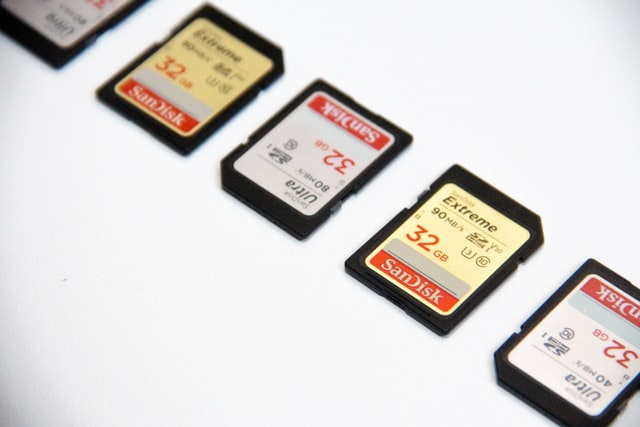
How Many RAW Images?
RAW photos are different from JPGs in that they contain all the data from each pixel in your camera, rather than an already processed image. Some cameras do compress RAW photos (particularly those that shoot at high megapixels), but in general, RAW files from one camera will all be much closer in size to one another than comparable JPGs, so it’s more reasonable to ask how many RAW photos can 32GB hold, compared with asking the same for JPGs.
In general, I would always recommend shooting in RAW, as although the file size is larger than for JPEGs (usually about 3x larger), the extra data contained in the RAWs makes any later photo editing and processing you do of much higher quality.
You should be aware though, that RAW file sizes can get quite large as ISO increases in night photography. This is because of the extra data each pixel produces from the increased brightness and color spots that shooting at high ISO causes.
There are examples below, shooting with various sized cards at the extremes of ISO on a Canon 6D:
How many photos can 16GB hold?
| RAW photos at ISO 50 | RAW photos at ISO 51200 | |
| Canon 6D with 16GB SD Card | 754 | 445 |
How many photos can 32GB hold?
| RAWs photo at ISO 50 | RAWs photo at ISO 51200 | |
| Canon 6D with 32GB SD Card | 1508 | 890 |
How many photos does 64GB hold?
| RAWs photo at ISO 50 | RAWs photo at ISO 51200 | |
| Canon 6D with 64GB SD Card | 3016 | 1780 |
How many pictures does 128GB hold?
| RAWs photo at ISO 50 | RAWs photo at ISO 51200 | |
| Canon 6D with 128GB SD Card | 6032 | 3560 |
How many pictures does 256GB hold?
| RAWs photo at ISO 50 | RAWs photo at ISO 51200 | |
| Canon 6D with 256GB SD Card | 12064 | 7120 |
In my testing, I found that the best memory card you can buy is the Sandisk Extreme Pro. If you would like to learn more, read the related article on the best Sandisk SD cards.
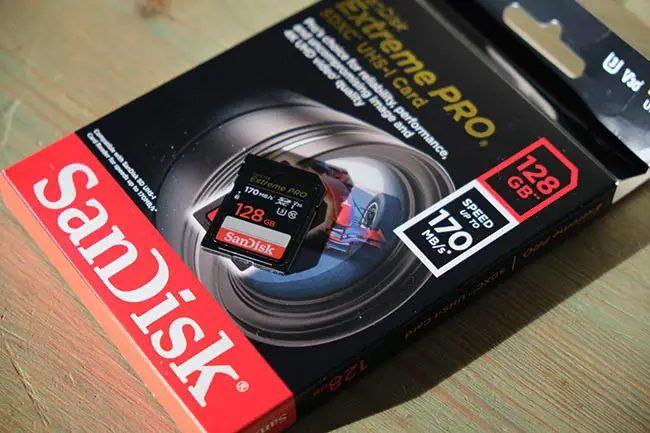 |
SanDisk Extreme Pro
|
Camera Resolution Determines How Many Photos in 32GB / 64GB / 128GB / 256GB
The number of photos that you can fit on your memory card doesn’t just depend on the photo file size, but also on the camera itself. The resolution of your camera (often written on the outside of the body, or you can find this within the in-camera menu or printed handbook) will probably be in the range of 15 – 30 megapixels.
The larger the number of megapixels that your camera shoots at, the larger the file size will be, for the same RAW or JPEG quality settings. Therefore, to determine how many photos in a GB for your memory card, you need to know your camera’s megapixels.
As an example, if I look at a 16GB SD card with one of my old 20 megapixels cameras, I can see that it holds 665 pictures. And if I use a more modern camera to look at how many pictures can 32GB hold at 30 megapixels, it is 802.
Both cameras were shooting RAW, but because of the extra megapixels, and therefore increased file size of the more modern camera, the number of pictures each can store is very similar, even though the memory card capacity has doubled. Therefore, knowing how many photos does 32GB hold requires more info on your specific camera to fully answer.
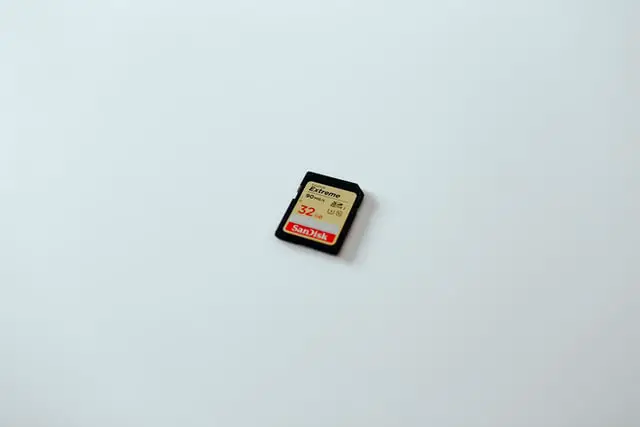
Calculating Your Camera’s File Size
Hopefully, you now see that it isn’t enough to ask a simple question like, “How many pictures does 32GB hold?”. or”How many photos will 64GB hold?” – you also need to know the file size of your photos.
You can take a look at the file size of the photos you’ve saved on your computer, by looking at their properties, if you want a quick idea, but it’s better to calculate an average, which is easy enough to do.
- First, take a photo on your camera (with the RAW / JPEG settings as you would normally shoot) at the lowest ISO setting, underexposed by 1 stop, then at the highest ISO setting, also underexposed by 1 stop, both of a uniform scene like a wall or the sky (but it’s preferable to photograph something at 18% grey).
- Repeat this twice, but taking pictures first with correct exposure, then with the photos overexposed by 1 stop. This should give you a representative range of file sizes.
- Then, look at the individual file sizes in your camera or once transferred to your computer.
- Add them all together, then divide by six for an average.
- Take your average file size and look at the memory card calculator towards the end of the article for how many pictures can a 32GB / 64GB / 128GB / 256GB memory card hold.
The reason for doing this is that photos with more white in them will be larger than photos that contain more black, as black is not saved to the file, it is simply the absence of other data, whereas white is the maximum amount of data that a pixel can produce.
For this reason, pictures shot at a high ISO, and/or overexposed, will also have larger file sizes, as the extra sensitivity results in a brighter picture and more data saved by each individual pixel.
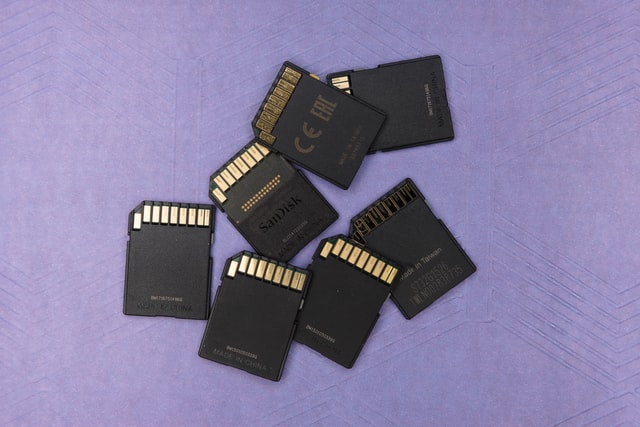
How Many Pictures Will 32GB Hold (or Higher Capacity SD Cards) in Practice
If you haven’t bought a camera yet, and want an idea of how many pictures will fit on 32 GB / 64GB / 128GB / 256GB memory cards, whether SD cards or other flash memory, then take a look below for some quick examples using popular camera models. Bear in mind that when you put a memory card in your camera, the real capacity will be slightly lower than the specified amount due to the historical difference between bits and bytes.
Personally, I often shoot three bracketed RAW photos, exposed at -1, 0 and +1 from the ‘ideal’ exposure, as this gives maximum flexibility for digital blending, so I have included this below, along with shooting RAW or JPEG (shot at the cameras highest quality setting) pictures individually.
How many pictures can 16GB hold?
| Canon 6D (20.2 MegaPixels) | Canon EOS 4000D (18 MegaPixels) | Sony A7III (24.2 MegaPixels) | Nikon Z7 (45.7 MegaPixels) | |
| JPEG | 5801 | 1747 | 1238 | 594 |
| RAW | 560 | 512 | 314 | 175 |
| Three brackets RAW | 187 | 171 | 105 | 58 |
How many photos on 32GB SD card?
| Canon 6D (20.2 MegaPixels) | Canon EOS 4000D (18 MegaPixels) | Sony A7III (24.2 MegaPixels) | Nikon Z7 (45.7 MegaPixels) | |
| JPEG | 11602 | 3494 | 2475 | 1188 |
| RAW | 1121 | 1024 | 628 | 349 |
| Three brackets RAW | 374 | 341 | 209 | 116 |
How many photos can 64GB hold?
| Canon 6D (20.2 MegaPixels) | Canon EOS 4000D (18 MegaPixels) | Sony A7III (24.2 MegaPixels) | Nikon Z7 (45.7 MegaPixels) | |
| JPEG | 23204 | 6988 | 4950 | 2376 |
| RAW | 2242 | 2048 | 1256 | 699 |
| Three brackets RAW | 747 | 683 | 419 | 293 |
How many photos can 128GB hold?
| Canon 6D (20.2 MegaPixels) | Canon EOS 4000D (18 MegaPixels) | Sony A7III (24.2 MegaPixels) | Nikon Z7 (45.7 MegaPixels) | |
| JPEG | 46408 | 13976 | 9900 | 4752 |
| RAW | 4483 | 4097 | 2512 | 1398 |
| Three brackets RAW | 1494 | 1366 | 837 | 466 |
How many pictures can 256GB hold?
| Canon 6D (20.2 MegaPixels) | Canon EOS 4000D (18 MegaPixels) | Sony A7III (24.2 MegaPixels) | Nikon Z7 (45.7 MegaPixels) | |
| JPEG | 92816 | 27952 | 19800 | 9504 |
| RAW | 8966 | 8194 | 5024 | 2796 |
| Three brackets RAW | 2988 | 2732 | 1674 | 932 |
Once you know what capacity of memory card you need, you next need to think about which class of card you need, plus the effects of differing read and write speeds on your camera. To read more about this, take a look at this article on the best Sandisk memory cards, or skip the reading and go straight to the best memory card for your camera, the Sandisk Extreme Pro.
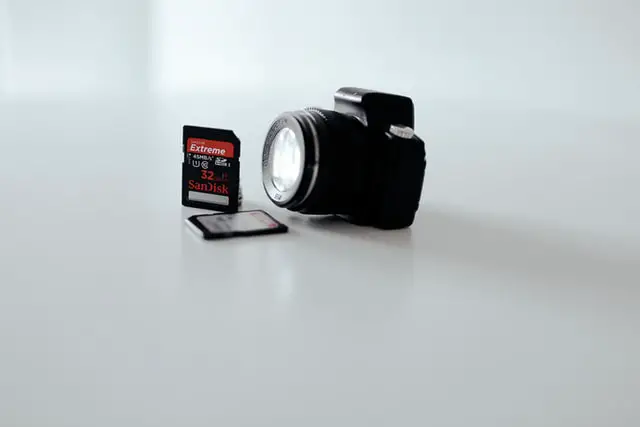
Memory Card Calculator
Once you have calculated you average file size, then use this table below to determine how many pictures your SD card, or other memory card, can hold. This table serves as an easy reference to see how many pictures will 16GB hold, how many pics can 32 GB hold, how many photos can be stored in 64GB, and how many photos will 128GB hold, right up to 256GB memory card sizes.
So following the table, if you wanted to know how many photos is 64GB, then simply find the 64GB memory card column and cross-reference this with the size of your image files in MB.
| File Size | 4GB Memory Card | 8GB Memory Card | 16GB Memory Card | 32GB Memory Card | 64GB Memory Card | 128GB Memory Card | 256GB Memory Card |
| 2 MB | 1856 | 3713 | 7425 | 14850 | 29700 | 59400 | 118800 |
| 4 MB | 928 | 1856 | 3713 | 7425 | 14850 | 29700 | 59400 |
| 8 MB | 464 | 928 | 1856 | 3713 | 7425 | 14850 | 29700 |
| 16 MB | 232 | 464 | 928 | 1856 | 3713 | 7425 | 14850 |
| 32 MB | 116 | 232 | 464 | 928 | 1856 | 3713 | 7425 |
| 64 MB | 58 | 116 | 232 | 464 | 928 | 1856 | 3713 |
Memory Card Types
Although overall capacity of the memory card is the most important metric when deciding on a memory card for your camera, you do also need to be sure that you are buying the correct type.
Memory cards are widely available in three types for modern cameras:
- Compact Flash
- SD Cards
- Micro SD Cards
Compact Flash is now largely obsolete, although can still be bought in Type-I and Type-II CF format. They were very common in cameras manufactured in 2010 and before – I still have an original Canon 5D that uses CompactFlash. These memory cards are large in size and relatively slow. They are also smaller in capacity than the types of SD cards, in general.
SD Cards are the most common kind of memory card found in the cameras of today. They are subdivided into SDHC, SDXC and SDUC, although each version remains the same physical size, and all will be compatible with any camera that can use an SD card. The current largest SD card is 1TB, which is pretty remarkable when you think that even a 16GB SD card was impressive just a few short years ago.
Micro SD Cards are smaller form factor versions of SD cards. Phones and some cameras use the micro SD format, which apart from physical size is otherwise identical to full-sized SD cards in specifications. It is possible to use a micro SD card in an SD card socket with the use of an adapter, which are commonly provided with micro SD cards.
Ideal Memory Card Size for You
I hope this has helped make it clear that the ideal memory card size for you depends on a number of factors both within your camera and how you shoot pictures, and that there isn’t an easy answer to questions like, “How many pictures can a 32GB sd card hold?”. If you regularly shoot bracketed RAW exposures like me, you will need a larger capacity card than someone shooting only standard quality JPEGs, for example.
Don’t forget though, that not all memory cards are created equally. Even within a brand of memory card like Sandisk, there can be significant differences between the same capacity of SD card.
In my testing, I found that the best memory card you can buy is the Sandisk Extreme Pro. If you would like to learn more, read the related article on the best Sandisk SD cards.
 |
SanDisk Extreme Pro
|
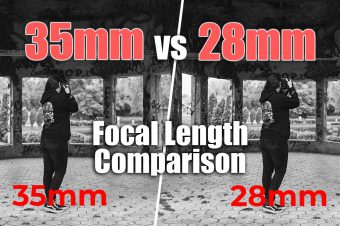

![The Best Resolution for a 19 Inch Monitor [SOLVED]](https://www.lapseoftheshutter.com/wp-content/uploads/2022/10/best-resolution-for-19-inch-monitor-340x226.jpg)


![What’s the Best Resolution for a 32 Inch Monitor? [SOLVED]](https://www.lapseoftheshutter.com/wp-content/uploads/2022/02/best-resolution-for-a-32-inch-monitor-340x226.jpg)
Leave a Reply